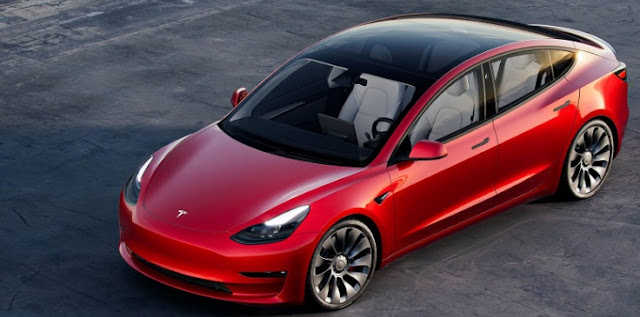Self-driving
cars
in which human drivers are never required to take control in order to operate
the vehicle safely. Self-driving cars
known as autonomous or "driverless" cars, they combine sensors and
software to control, navigate and steer the vehicle.
Currently, there are no
legally operated, fully-autonomous vehicles in the United States. However,
there are partially autonomous vehicles—cars and trucks with varying amounts of
self-automation, from conventional cars with brakes and lane assist to
highly-independent, self-driving prototypes.
Although still in its
infancy, self-driving technology is becoming increasingly common and could
fundamentally change our transportation system (and by extension, our economy
and society). Based on estimates from the automaker and technology company,
Level 4 self driving cars could be
for sale within the next several years.
Layers
of Self Driving cars
Different cars are capable
of different levels of self-driving, and are often described by researchers on
a scale of 0-5.
Level 0: All major systems
are controlled by humans
Level 1: Some systems, such
as cruise control or automatic braking, can be controlled by the car, one at a
time
Level 2: The car provides at
least two simultaneous automatic functions, such as acceleration and steering,
but requires humans for safe operation
Level 3: The car can handle
all safety-critical functions under certain conditions, but the driver is
expected to take charge when alert
Level 4: The car is fully
autonomous in some driving scenarios, though not all
Level 5: The car is fully
capable of self-driving in all conditions
How
self driving or autopilot cars work
Various self-driving
technologies have been developed by Google, Uber, Tesla, Nissan and other major
automakers, researchers and technology companies.
While design details vary,
most autopilot systems create and maintain an internal map of their
surroundings based on a wide range of sensors such as radar. Uber's
self-driving prototypes use sixty-four laser beams along with other sensors to
build its interior map; Google's prototypes have, at various stages, used
lasers, radar, high-powered cameras and sonar.
The software then processes
those inputs, plots a path, and sends instructions to the vehicle's
"actuators," which control acceleration, braking, and steering.
Hard-coded rules, obstacle avoidance algorithms, predictive modeling, and
"smart" object discrimination (i.e., knowing the difference between a
bicycle and a motorcycle) help software obey traffic rules and navigate
obstacles.
If the system encounters
uncertainty, partially autopilot vehicles may require a human driver to
intervene; fully autopilot vehicles may not even have a steering wheel.
Self
driving cars can be further distinguished as having or
not being "connected", indicating whether they can communicate with
other vehicles and/or infrastructure, such as next-generation traffic
lights. Most prototypes currently do not
have this capability.
There
is a growing consensus among autopilot developers knowledgeable about several
key aspects of the technology and its imminent deployment:
• Automated operation will
be possible during the coming years only in narrowly defined conditions
including mild weather, lighting, and traffic and electronically geofenced
locations that have been mapped with high precision (and, in many cases,
suitable Equipped with physical and digital infrastructure support (features).
• Because autopilot driving
system is required to avoid all traffic hazards that face them without human
driver intervention, the system must incorporate a higher level of safety
assurance than driving-assistance systems that rely on human supervision.
• Autopilot driving system
needs to rely on multiple independent sources of information about the driving
environment and its hazards. These data come from cameras, lidar (Light
Detection and Ranging System), radar and precise positioning combined with
highly detailed digital maps.
• Although many autopilot
driving system developers claim the ability to drive without relying on
wireless communications from other vehicles—or with alerts from vulnerable road
users and actual roadside infrastructure—recent research has shown that such
Widespread use of autopilot driving system without cooperative communication of
autopilot driving system is likely to have adverse effects on traffic flow,
energy use and environmental emissions due to the inability to anticipate
future changes in road conditions.
• The technology will initially
be applied to specialized uses in local package delivery, long-distance
trucking on motorways, urban transit services on fixed routes and more confined
spaces for urban and suburban automated passenger rides.
• Even when autopilot
driving system are able to operate vehicles without a human driver onboard as
backup, they will still require remote support from skilled driver humans to
manage "corner case" situations, which will need to be handled by
automation.
Frequently Asked question
(FAQ)
1.
Are Self Driving Cars Safe?
Some reports and experts
suggest that autopilot vehicles are already safer than human-powered vehicles
when it comes to performing certain driving tasks. Self driving cars do not
suffer from sleep deprivation, and they cannot drive under the influence of
drugs or alcohol. They also have wider fields of vision and are designed to
obey traffic laws, while human drivers sometimes disobey the laws or fail to
obey them due to distractions.
2.
What are the shortcomings of Autopilot or Self Driving Cars?
One of the biggest concerns
is that people will be encouraged to drive longer distances if there is no
policy in place to limit vehicle miles traveled. This could have the adverse
effect of expanding cities beyond existing boundaries – a new wave of urban
sprawl, taking over open spaces and moving people away from city areas.
3.
Have self-driving cars changed the way cities are planned and built?
Very few cities or
government agencies are thinking of autonomous vehicles right now. My research
colleagues and I are trying to ignite a sense of urgency in cities. They have
to start planning the cities they want to see in 50 years. This is one of the
ideas behind this convention.
Cities need to start
thinking about how they will recover money from lost parking. Transportation
engineers should reconsider the allocation of roads to vehicles, as autonomous
vehicles will use lanes more efficiently and require less road space.
4.
Will people accept self driving cars?
There are some perception
issues for self-driving cars to overcome. The 2019 installment of AAA's annual
autonomous-vehicle survey found that 71% of those surveyed would be afraid to
ride in fully autonomous vehicles—slightly down from 73% of respondents in 2018
and well above the 63% of respondents who didn't. Said they would be afraid to
be a passenger in a driverless vehicle in 2017. Just 19% of respondents in the
2019 survey said they would be comfortable putting their children and other
family members in autonomous vehicles.












0 Comments